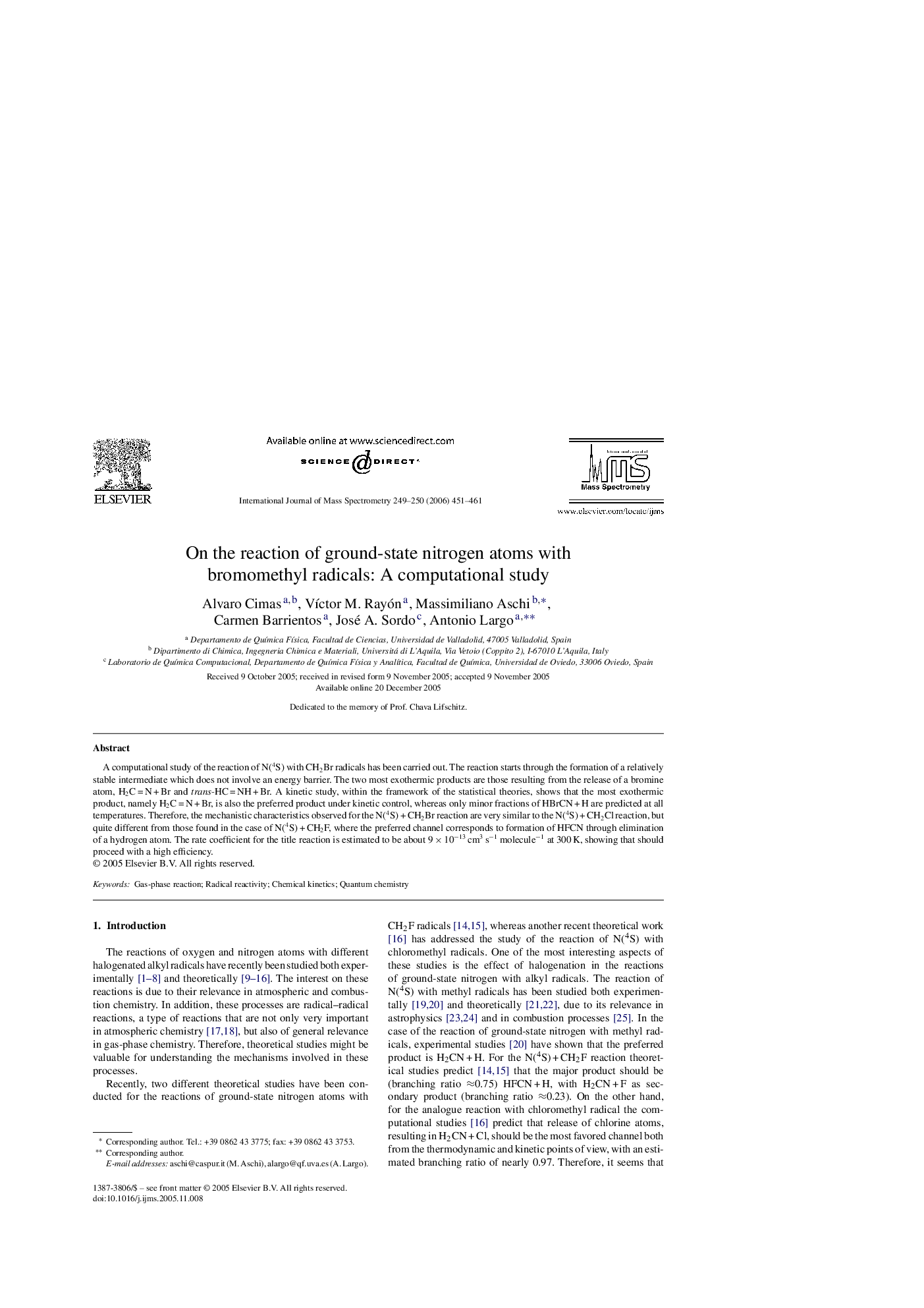| Article ID | Journal | Published Year | Pages | File Type |
|---|---|---|---|---|
| 1194344 | International Journal of Mass Spectrometry | 2006 | 11 Pages |
Abstract
A computational study of the reaction of N(4S) with CH2Br radicals has been carried out. The reaction starts through the formation of a relatively stable intermediate which does not involve an energy barrier. The two most exothermic products are those resulting from the release of a bromine atom, H2CÂ =Â NÂ +Â Br and trans-HCÂ =Â NHÂ +Â Br. A kinetic study, within the framework of the statistical theories, shows that the most exothermic product, namely H2CÂ =Â NÂ +Â Br, is also the preferred product under kinetic control, whereas only minor fractions of HBrCNÂ +Â H are predicted at all temperatures. Therefore, the mechanistic characteristics observed for the N(4S)Â +Â CH2Br reaction are very similar to the N(4S)Â +Â CH2Cl reaction, but quite different from those found in the case of N(4S)Â +Â CH2F, where the preferred channel corresponds to formation of HFCN through elimination of a hydrogen atom. The rate coefficient for the title reaction is estimated to be about 9Â ÃÂ 10â13Â cm3Â sâ1Â moleculeâ1 at 300Â K, showing that should proceed with a high efficiency.
Related Topics
Physical Sciences and Engineering
Chemistry
Analytical Chemistry
Authors
Alvaro Cimas, VÃctor M. Rayón, Massimiliano Aschi, Carmen Barrientos, José A. Sordo, Antonio Largo,
